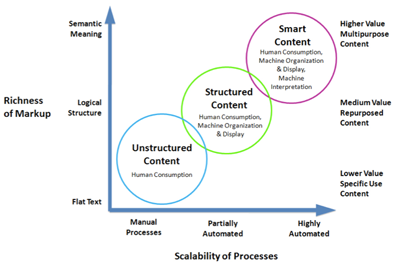Hugging Face is taking its first step into machine translation this week with the release of more than 1,000 models. Researchers trained models using unsupervised learning and the Open Parallel Corpus (OPUS). OPUS is a project undertaken by the University of Helsinki and global partners to gather and open-source a wide variety of language data sets, particularly for low resource languages. Low resource languages are those with less training data than more commonly used languages like English.
Models trained with OPUS data now make up the majority of models provided by Hugging Face and the University of Helsinki’s Language Technology and Research Group the largest contributing organization. Before this week, Hugging Face was best known for enabling easy access to state-of-the-art language models and language generation models, like Google’s BERT, which can predict the next characters, words, or sentences that will appear in text. The Hugging Face Transformers library for Python includes pretrained versions of advanced and state-of-the-art NLP models like versions of Google AI’s BERT and XLNet, Facebook AI’s RoBERTa, and OpenAI’s GPT-2.
https://huggingface.co h/t: VentureBeat
Progress announced the release of Progress Sitefinity 13 Digital Experience Platform (DXP). The new release includes:
- A new productivity environment to manage digital assets and classify content in a consistent and resource-efficient manner
- The ability to control the look and feel of the presentation layer while delivering content to a myriad of channels. This is possible through the new page layout service that decouples content from presentation when distributed to external channels.
- Personalization based on custom tags such as title, campaign source or other attributes as well as consistent, personalized experiences for returning visitors, regardless of the initial touch point.
- Customer journey and online touchpoint monitoring based on machine learning, enabling marketers to receive proactive touchpoint alerts in order to spot new opportunities and improve the ROI of marketing campaigns.
- Data-driven analytics to measure the performance of content with a comprehensive view of all personalization initiatives as well as the ability to export data directly to Google Data Studio for expanded data analysis options.
https://www.progress.com/sitefinity-cms
SDL announced it has advanced its partnership level with Veeva Systems (“Veeva”), supporting the product life cycle for pharmaceutical and Life Sciences companies. SDL Translation Management System (TMS) is integrated with the Veeva Vault RIM Suite, a cloud-based Regulatory Information Management (RIM) system. In the biopharmaceutical sector, companies must react quickly to complex regulatory updates across multiple regions. The combination of SDL’s network of in-house certified medical translators with SDL’s translation management technology provides an integrated set of translation capabilities within Veeva Vault RIM. This integration enables Veeva Vault RIM customers to automate multilingual tasks relating to regulatory document submissions, engagement with health authorities and product registration. SDL joined Veeva Systems’ Technology Partner Program in 2018. https://www.sdl.com
Adobe and ServiceNow announced the availability of its partnership integration connecting data from Adobe Experience Platform and ServiceNow’s Customer Service Management workflow product to enable more seamless, connected customer experiences. Connecting Adobe Experience Platform, its Customer Experience Management (CXM) platform, and ServiceNow’s Customer Service Management product provides brands with a more complete view of the customer. Through this integration, Adobe and ServiceNow joint customers can:
- Establish Context to Drive Brand Loyalty
Enterprises are often challenged by navigating internal silos of data pertaining to interactions with their customers. This integration creates data workflows that removes those barriers and connects marketing and customer service organizations.
- Gain Deeper Insights for Personalization
Great experiences are built on the understanding of a customer’s journey. Customers can streamline work between teams by aggregating data during the “evaluate” and “purchase” touchpoints, and capture service interactions to ultimately build rich, real-time customer profiles.
- Improve Customer Experiences
A seamless customer experience allows for anticipating needs before they arise. With ServiceNow, organizations will understand which products or services the customer owns and uses, allowing organizations to drive towards greater personalization.
www.adobe.com, www.servicenow.com
The Metadata Object Description Schema (MODS) is an XML-based bibliographic description schema developed by the United States Library of Congress’ Network Development and Standards Office. MODS was designed as a compromise between the complexity of the MARC format used by libraries and the extreme simplicity of Dublin Core metadata.
Smart content is structured content that also includes the semantic meaning of the information. The semantics can be in a variety of forms such as RDFa attributes applied to structured elements, or even semantically names elements. However it is done, the meaning is available to both humans and computers to process.
See:
What is Smart Content?
Global businesses recognize the need to address localization and translation in tandem with content creation and content management, but they are often stymied, even overwhelmed, by how to achieve this. Our research points to the emergence of what we define as the Global Content Value Chain, a strategy for meeting these challenges. Organizations embracing this strategy are leading the development of much-needed best practices.
See the free report (93 page PDF):
Multilingual Communications as a Business Imperative: Why Organizations Need to Optimize the Global Content Value Chain
by Leonor Ciarlone, Karl Kadie, & Mary Laplante, July, 2008
‘Document computing’ was a term used to cover a collection of technologies that emerged as computer, or electronic publishing became a growing industry late 1980s and early 1990s. The idea was to differentiate the creation, management and delivery of unstructured data from the traditional and still prevalent structured data orientation of computing applications. It was one of the keynote topics at the first Documation conference in 1994 . Also see the more current, largely overlapping ‘content technology’.
Also see:
Gilbane Report Vol 6, Num 1 — Document Computing – Is This Our Business?


